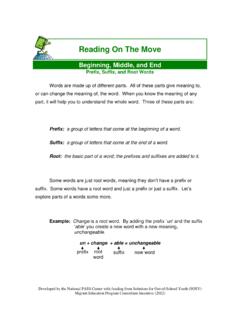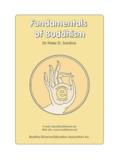Transcription of Notes for the Teacher - National Council Of …
1 Notes for the TeacherBeehive, a textbook in English for Class IX, is based on the new syllabus inEnglish which was prepared as a follow-up to the National CurriculumFramework, 2005. The curriculum calls for an approach that is rich incomprehensible input and adopts a language-across-the-curriculum,multiling ual perspective. This reader aims at helping the child to read formeaning, and to learn to communicate in English with confidence has been taken to give a central place to the learner in the processof teaching and learning.
2 Learner-friendly language has been used inthe instructions, and the exercises and activities are addressed to thechild. In this process the Teacher is a facilitator or a rich variety of reading material has been provided to include the literary,cultural and sociological dimensions of texts. The themes range fromchildhood and adolescence, to disability, talent and achievement, tomusic, science, and contemporary social and environmental range is as inclusive as possible, keeping in view the interest andcognitive development of the learners.
3 The book draws on different genressuch as story, biography and autobiography; science fiction; humour;travelogue; and the one-act number of poems has been increased to help learners explore thisgreat source of language, derive the joy of learning through poetry, andunderstand the music of words. An attempt has been made to includedifferent types of poems such as the lyric, the ballad and the poems have been chosen for their simplicity and suitability in termsof language and thought. We need not talk about the poet or thebackground to the poem, unless the poem seems to demand it.
4 Norshould we attempt to exhaust all the possibilities of a poem; we shouldencourage the students to begin to see some of the possibilities. Theyshould be guided to apprehend the poem through the visual, the auditory,the tactile, the intellectual, or the emotional channels, and to understandthe suggestiveness of the attempt has been made to help the learner develop the skill ofpredicting and anticipating what follows. Every good reader should guesswhat is coming next. The task Before You Read given at the beginning NCERTnot to be republishedof each unit is designed for this purpose.
5 Learners should be encouragedto participate in this section Thinking about the Text attempts to move from surfacelevel understanding of the text to critical thinking. The comprehensionexercises given here try to help the learners infer meaning. There are afew questions which ask for the readers judgment; they aim to bringout the learners deeper understanding of the the section Thinking about Language : Vocabulary enrichment has been attempted through a variety oftasks on the usage of words closely related in meaning, matchingwords to meanings, word building (including phrasal verbs), andreference to the dictionary.
6 An activity on the use of the index hasbeen included. Attention has been drawn to grammar-in-context that emerges out ofthe reading text, the use of the tenses and voice, reported speech,conditional and subordinate clauses or phrases, and communicative skills have been exercised by tasks on Speakingand Writing. The Speaking tasks call for learners to work in pairs orgroups, (for example) to present an argument, express a viewpoint,express contrasts, seek or give an opinion, introduce a speaker, tell astory, enact or read out a play in parts, are a variety of writing tasks: help writing newspaper report, anarticle for a school magazine, argumentative writing, narration,description, and picture small attempt has been made to relate speech and writing by pointingout similarities and differences.
7 Opportunities for writing in groups andpairs are provided to get into the have introduced the old exercise of dictation again but from acompletely different perspective. Dictation has been introduced in itscurrent, updated form as a variety of activities designed to integrate thelanguage skills of listening, prior reading, language processing and recall,and writing, including the appropriate use of punctuation in exercises also allow scope for the learners languages to supportone another s by asking for reflection on relevant words, or poems orstories in other languages; and attempt (preliminary as they may be) toattend to the process of translation.
8 Activities have been suggested tobring out the relatedness of the learners school / Beehive NCERTnot to be republishedUnits 1 31. THE FUN THEY HADThis story takes us to the world of the future where computers will playa major role. Let the children talk freely about how they imagine theschools of the future that their own children might go to. You might wantto explain the ideas of virtual reality and virtual classroom . The term virtual reality refers to a reality created by computer software, and a virtual classroom is not a real classroom but one where learning isthrough computer software or the Internet.
9 The children may know whata robot is, and be able to guess what a robotic Teacher would this unit students are required to present their arguments in a following points could be explained before the task. A debate is a contest between two speakers or two groups of speakersto show skill and ability in arguing. A proposition, a question or a problem is required for this purpose,which can be spoken for or against. To participate in a debate, one must prepare for it. So, one mustprepare an outline of the main points in the order in which one isgoing to argue.
10 The time limit is about four to five minutes. The speaker addresses the audience. Every topic/subject has its own vocabulary. These must be learnt. The speaker addresses the chair (Mr President/Madam), submits an argument, appeals for sympathetic understanding and support, questions the opponent s views, and concludes an THE SOUND OF MUSICT hese biographical pieces tell us of people who have achieved successand recognition through determination, hard work and courage. Thechildren may be asked to think of potential barriers to success, and ofpeople who have overcome them.

















